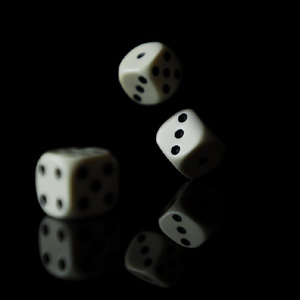The concept of infinity goes back to the Greeks - Zeno stated the paradox of the tortoise and the hare in 450 BC. Aristotle firmly took the view that the human mind can comprehend only finite things so that infinities were out of order. The idea soon acquired religious connotations and St Augustine tackled the question of whether the human ambition to comprehend infinity is an impious trespass on a divine prerogative. He reconciled the potential conflict by noting that God would regard the human construct of infinity as a trivial accomplishment by his standards and of no great interest. The reality of infinity is not in dispute. Cosmologist and mathematician John Barrow, in The Infinite Book, offers a score of memorable and entertaining examples. Just keep counting, for example, and you realise that there is no end in sight.
It was Gallileo who first put infinity on the map. In The Dialogue of the Two Worlds he demonstrated that a list of all the whole numbers (1,2,3 ) and a list of their squares (1,4,9 ) will be equally large although the first list includes many numbers ('5' for example) that do not appear in the second.
That seems to be the spark that set mathematician Georg Cantor off. Born in 1849, his wellheeled youth marked him as a potential mathematician. After spells in Berlin and the Swiss Federal Polytechnic at Zurich he settled at the University of Halle, waiting for a call to a professorship that never came. His first achievement was to find a way of classifying infinities, first showing that the rational numbers (fractions with whole numbers above and below the line) constitute an infinity no greater in extent than the infinite list of the whole numbers. Cantor called it 'accountable infinity', and assigned it a symbol of its own, called Aleph, the first letter of the Hebrew alphabet. As might be expected Cantor went on to find other kinds of infinities that were not countable by the rules he had established. In doing so he started a hunt among mathematicians which has led to the conclusion that there is an infinite number of infinities in a hierarchy stretching upwards into obscurity from the simple natural numbers with which Cantor began.
All this is preparation for Barrow's account of the Universe and its current problems. Early in the nineteenth century, physicists were aware that many of their theories of natural phenomena ran into problems with infinities. For example, Newton's second law predicts that the acceleration of an object by even the tiniest force will be infinite only if the mass of the object is zero. The sensible view of that circumstance is that the model cannot be complete. In this case, there are no objects of zero mass.
Barrow's cosmology might be described as middlestream, but with rough edges. He accepts the Big Bang followed by an inflationary Universe as a useful idea, but also that the data (and the ideas) now to hand are insufficient to determine the physical scale of the system, whether it is curved in on itself and what its fate will be. There is a lot still to play for.
The Infinite Book is available from Amazon (UK)

